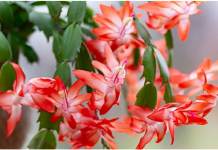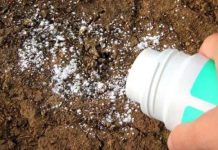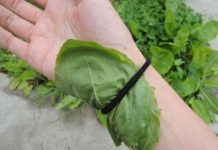Read the common mistakes to avoid when repotting houseplants by following the simple rules recommended in the given article.
If you want to know all the secrets of transferring your old plants to a new container, check out the top mistakes to avoid when repotting houseplants.
When to repot houseplants?

Before deciding to repot a plant, look for the following signs to determine whether or not it’s time to repot your plants. Repot plants when:
You notice a slow growth, even during the growing season.
- The roots form a huge tangled mass.
- The roots spill out of the bottom of the pot.
- The plant dries out quickly and needs more watering.
- The pot does not support the plant.
- Water drains quickly from the bottom holes – this happens when there is less soil to hold moisture and more roots.
- If you notice salt build-up on the soil surface.
Mistakes to avoid when repotting houseplants
Mistake 1: Wrong pot size
Pot size is the most important thing in the whole repotting process. Always choose a pot that is one size larger than the previous pot. This will allow enough room for the roots to grow and the soil will not be waterlogged for several days after watering.
Mistake 2: Ignoring the importance of drainage
When repotting, drainage also plays an important role in the well-being of the newly repotted plant. In addition, gravel should not be added to the bottom of the plant, as this will raise the moisture content of the soil and may lead to root rot due to lack of oxygen.
For good drainage, a pot needs to have enough drainage holes. If you are using a decorative pot without drainage holes, you can drill a few in the bottom.
Mistake 3: Breaking the whole root ball
Instead of breaking the entire root ball, gently loosen it with your fingers. If the roots are very tight and deeply tangled, soak the root ball in water for a few hours or overnight – this will make it easier.
If the roots are very tight and have grown into a coiled shape, you can cut off the excess with sanitized shears.
Mistake 4: Wrong selection of the soil
It is necessary to use the type of soil according to the species of the plant. For example, if you are growing dracaena, yucca or rubber tree, use a coarse soil with large particles like lava rock or perlite about 1/4 inch in size. This will allow for good drainage and root development.
For plants such as begonias, African violets and other small plants, use a potting mix of vermiculite, peat moss and perlite.
Mistake 5: Repotting in cold weather
If you live in a cold climate, avoid repotting your plants in the winter, as the plant may experience transplant shock, which could ultimately lead to death. Wait until summer or spring to repot them.
If you live in a warm climate, you can repot the plant at any time when you see the need.
Mistake 6: Repotting a flowering plant
Houseplants bloom when conditions are ideal, and repotting them during this time will completely abandon the bloom.
Mistake 7: Not all plants need to be repotted
Plants like bird of paradise and peace lily do surprisingly well when they are lightly rooted and use their energy to grow flowers instead of roots.
Mistake 8: Avoid repotting a large plant
If the plant is growing well and is large and happy, then there is no need to repot it. It will also be too heavy to pull out of an old pot and you will end up damaging it. Simply scrape off the top of the pot and replace it with fresh compost.
The final result

Repot old plants only when you see the roots coming out of the pot or if you want to place the plant in a different or colored container. During repotting, be gentle and careful when moving the plant to a new container. Handle the root ball carefully and make sure you do not damage it.
CLICK NEXT PAGE BELOW TO CONTINUE READING …










